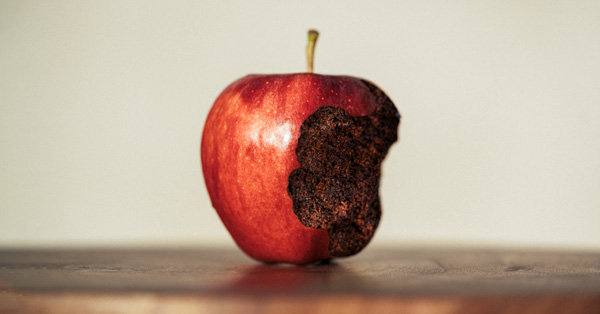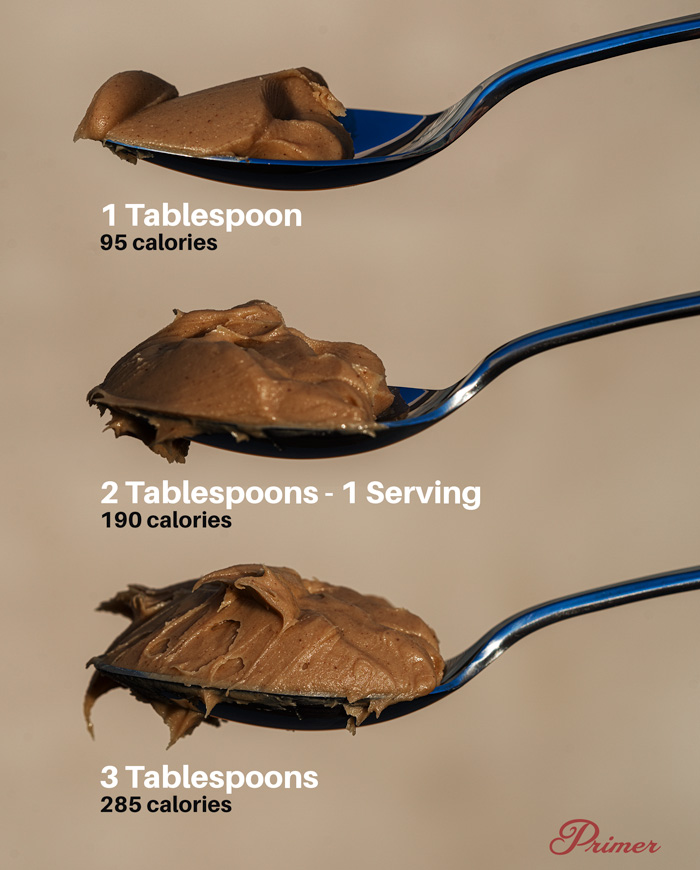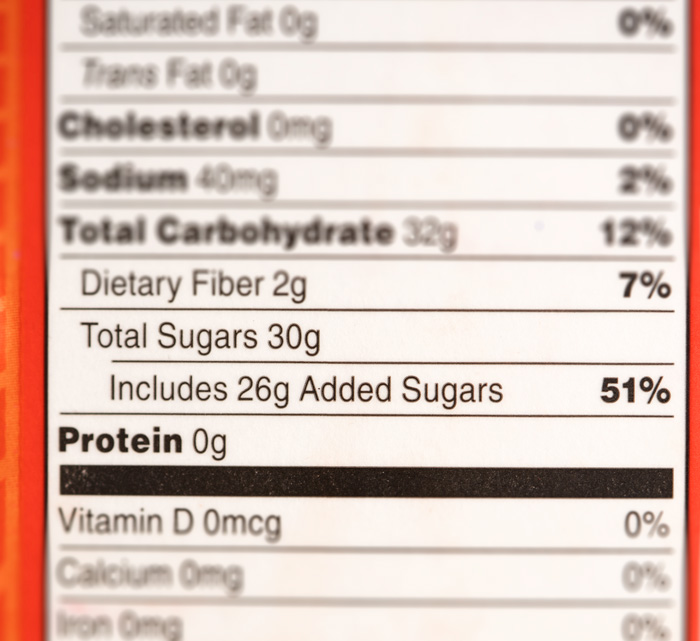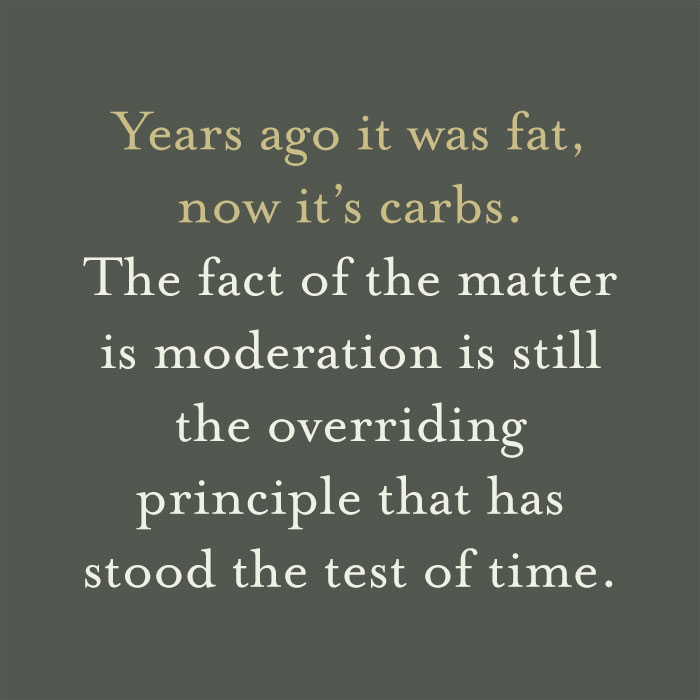
Some of your staples may be acting as double agents.
Brad is a university lecturer with a master’s degree in Kinesiology and is a Certified Strength and Conditioning Specialist (CSCS) with the National Strength and Conditioning Association (NSCA). He has competed as a drug-free bodybuilder, is a cancer survivor, and a 21 year veteran of the Air National Guard. Brad has been a Primer contributor since 2011.
Are there foods that are secretly ruining your diet? Foods that are seen and accepted as healthy but actually sabotaging your best efforts?
We tend to pride ourselves on knowing what foods are good and which are bad. Normally, if we see a label with the terms “healthy,” “lean,” “more protein,” or “gluten free,” we feel assured we’re on the right track regarding getting leaner, healthier, and feeling better.
Whether it’s a new year, a goal for an event, or a personal commitment we all want to see and experience real, significant results from our best efforts and eating better often tops the list.
With that in mind let’s look at some foods that may secretly be ruining your caloric intake. But first, let’s break down a few important points like what is a calorie, how do we use calories, and if there are really any bad foods out there?
What is a calorie?
Simply put, a calorie is a unit of energy. In the human body it’s defined as a unit of heat generated to raise the temperature of 1 kilogram of water from 0 to 1 degree Celsius. This is where the term “burn calories” comes from.
In practical terms, we raise the temperature within our bodies, usually through exercise and other means, and give off heat from energy expenditure.
Food is our main source of energy. We take in calories, burn them, then replace them. Where we run into trouble is when we either take in too many, burn too few, or both.
How do we burn calories?
Exercise isn’t the only way to torch some calories. There are other avenues that require great amounts of energy – even greater than intense exercise.
There are four main pathways that require calories throughout our day. Let’s quickly break these down to get a better perspective:
So it goes without saying that much of our caloric expenditure comes from just existing. This is why our eating habits are so important and why we need to pay close attention to our food choices.
Are there really any bad foods?
Yes and no. There are plenty of foods that would be considered “bad” for their sheer lack of nutrients, processed formulation, and preservatives and additives that could have detrimental effects on our health. Hydrogenated oils, for example, are man made fats designed to add taste and shelf life to certain foods, but it’s bad news for our health.
A good rule of thumb is to identify more foods that are natural and eaten with moderation as “good” foods. Let’s take a look at a few common foods that you may think are healthy but could fit the criteria as troublesome and be ruining your calorie intake.
Peanut butter
Peanut butter is one of the unofficial staples of the American diet. Whether you eat it added to certain meals or on its own as a treat, the fact is that it packs a ton of calories per serving. An actual serving of two tablespoons (not an ice cream scoop) results in around 190 calories and 16 grams of fat. It’s easy to overestimate servings especially with such a tasty treat, but moderation is key.
Furthermore, regular peanut butter includes hydrogenated oils which are man made and can potentially cause health problems over time and added sugar. Natural peanut butter, however, contains healthy unsaturated fat which is derived from the peanuts themselves. So, if you decide to include moderate amounts of peanut butter in your diet, opt for the natural kind.

Supplements
Supplements not only promise the world, they have also somehow become an unofficial requirement when reducing calories for fat loss. Many, however, have hidden calories. Whether it’s ergogenic aids like creatine that may include fillers such as sugar or protein powders and meal replacements that can add extra processed carbohydrates, it’s imperative that you read labels and consider these extra calories in your diet.
Enhanced water
Enhanced water comes off as nutritious as they are marketed to include vital vitamins and minerals. Some are even said to be enhanced with protein. While this all may be true, many also contain copious amounts of sugar which can secretly increase your calorie count.
Protein bars
Some may categorize protein bars as a supplement food. In many ways they are. Those who train regularly, pack a lunch to work, and/or keep track of their eating habits may use protein bars for a before or after workout snack, a midmorning meal, or wish to add in more protein to their diet. However, many contain added sugar and other carbohydrate fillers to add flavor and texture. Every other manufacturer claims better taste, better nutrition, and higher quality ingredients. Be careful. Some are only as good as a candy bar.
Gluten free baked goods
Whether you are gluten intolerant, have celiac disease, or have decided to reduce or eliminate gluten from your diet, one thing is for sure, the food industry has taken full advantage of this trend. But buyers beware. Just like the low fat craze years ago where sugar was added in many foods to replace fats, so too is the gluten free craze adding in other ingredients to offset the texture and flavor. Being gluten free isn’t some magic bullet rendering the calorie count obsolete.

Smoothies
Store bought smoothies are often loaded with extra sugar, highly processed fruit purees, and other ingredients either not listed or part of some type of proprietary blend. Additionally, since most if not all smoothies are appetizing, they are quickly consumed and leave you wanting for more. It’s too easy of a way to ingest a significant amount of calories in a short period of time.
Healthy fats
Too much of a good thing is most likely, well, too much. Healthy fats such as avocado, nuts, and olive oil still contain fat. Yes, they are of the healthier variety, but one gram of fat equals around nine calories as opposed to protein and carbohydrates which have four calories per gram. With over twice the calorie count, the calories in fat can quickly add up. A little goes a long way.
How to choose healthy foods
All the foods listed above could potentially be classified as healthy foods, however, moderation is key when it comes to fat and sugar. Let’s take a look at how these foods can become our allies in the bigger picture of a whole food eating plan.
Look at the label
Yes, food guidelines on food labels aren’t necessarily an exact science, but they will give us a visual guide regarding serving sizes, calories, and other nutrient information. The aforementioned peanut butter serving size is a great example.
You can even take it one step further and keep a record of your eating habits. In fact, a 2008 study from Science Daily took 1,700 participants and had some keep a food diary. The ones that did doubled their weight loss as opposed to those who didn’t keep no records [2].
An easy app that Andrew, Primer’s founder and editor, tracked his calories in for over 4 years is Under Armour’s MyFitnessPal.

Curtail fat and added sugar
As we’ve seen, many foods contain hidden fat and added sugars to enhance taste and texture. One of the most effective ways to initially change eating habits is to simply limit these amounts without overhauling your entire diet. It’s a subtle way to decrease overall calories since a gram of fat has over twice as many calories as protein and carbohydrate.
So, in addition to looking at labels and serving sizes, look for specific food choices that have little to no added sugars and lower levels of fat.
Prioritize protein
Protein will help you feel fuller, longer. A study from the American Journal of Clinical Nutrition found that a diet that prioritized protein helped individuals achieve higher satiety levels, the feeling of fullness, and the retention of lean muscle mass [3].
Upping your protein even slightly can have a profound effect on your overall caloric intake. If you prioritize protein throughout the day, you’ll feel fuller and will potentially avoid overeating.

Carb misinformation
It seems that every decade or so we are shifting gears on which macronutrient is the bad guy. Years ago it was fat, now it’s carbs. The fact of the matter is moderation is still the overriding principle that has stood the test of time.
We still need carbs for simple bodily functions such as brain and pulmonary activity as well as to provide energy for our workouts. Stick with complex carbs like oatmeal, sweet potatoes, rice, and whole wheat bread.
Be mindful of overall calories
All of the advice above is to say that your overall calories do count. If you can work on these small adjustments one by one and over time you will have made some monumental shifts in your diet and wellbeing. It doesn’t require you to turn your entire world upside down. Work with what you have, make the adjustments, and practice patience.
In closing
Don’t let these foods ruin your diet. Some are fine with moderation, but be diligent about reading labels and practicing portion control. Also, just because a product claims it’s healthy or uses attractive vernacular doesn’t prove its worth to your goals. The more balanced natural foods you eat the better off you’ll be at achieving a healthier body.
- Trexler, Eric & Smith-Ryan, Abbie & Norton, Layne. (2014). Metabolic adaptation to weight loss: Implications for the athlete. Journal of the International Society of Sports Nutrition. 11. 7. 10.1186/1550-2783-11-7.
- Kaiser Permanente. (2008, July 8). Keeping A Food Diary Doubles Diet Weight Loss, Study Suggests. ScienceDaily. Retrieved January 12, 2022 from www.sciencedaily.com/releases/2008/07/080708080738.htm
Douglas Paddon-Jones, Eric Westman, Richard D Mattes, Robert R Wolfe, Arne Astrup, Margriet Westerterp-Plantenga, Protein, weight management, and satiety, The American Journal of Clinical Nutrition, Volume 87, Issue 5, May 2008, Pages 1558S–1561S, https://doi.org/10.1093/ajcn/87.5.1558S